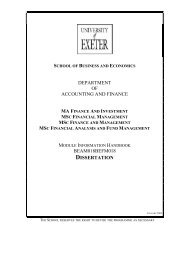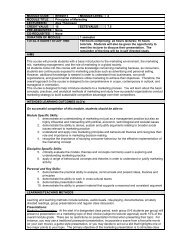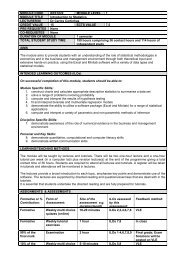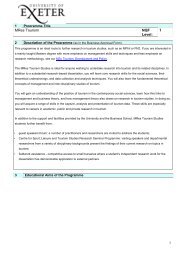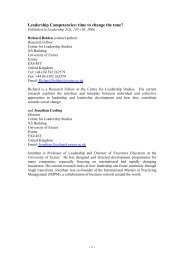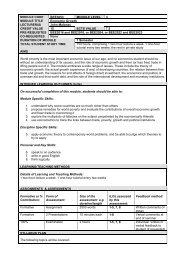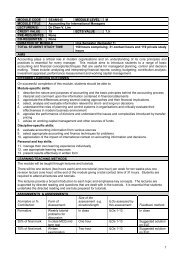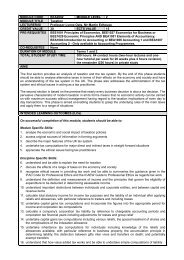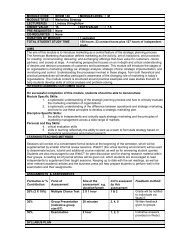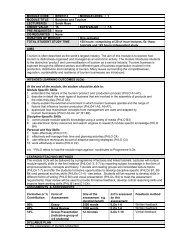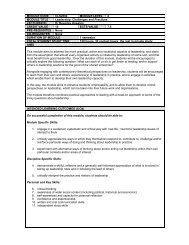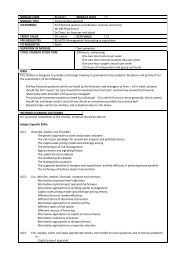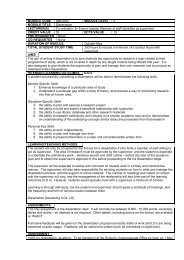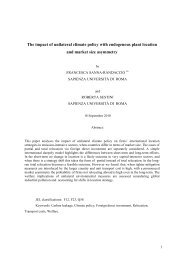What is Leadership? - The Business School - University of Exeter
What is Leadership? - The Business School - University of Exeter
What is Leadership? - The Business School - University of Exeter
You also want an ePaper? Increase the reach of your titles
YUMPU automatically turns print PDFs into web optimized ePapers that Google loves.
- they like to be challenged and they’re<br />
prepared to take r<strong>is</strong>ks.<br />
Of interest, too, <strong>is</strong> the emphas<strong>is</strong> on the<br />
importance <strong>of</strong> qualities such as honesty,<br />
integrity, empathy, trust and valuing<br />
diversity. <strong>The</strong> leader <strong>is</strong> expected to<br />
show a true concern for people that <strong>is</strong><br />
drawn from a deep level <strong>of</strong> selfawareness,<br />
personal reflection and<br />
emotional intelligence (Goleman, 1998).<br />
Th<strong>is</strong> almost iconographic notion <strong>of</strong> the<br />
leader, as a multi-talented individual<br />
with diverse skills, personal qualities and<br />
a large social conscience, posses a<br />
number <strong>of</strong> difficulties. Firstly it<br />
represents almost a return to the ‘great<br />
man’ or ‘heroic’ notions <strong>of</strong> leadership,<br />
which venerate the individual to the<br />
exclusion <strong>of</strong> the team and organ<strong>is</strong>ation.<br />
Secondly when you attempt to combine<br />
attributes from across a range <strong>of</strong><br />
frameworks the result <strong>is</strong> an unwieldy,<br />
almost over-powering l<strong>is</strong>t <strong>of</strong> qualities<br />
such as that generated during the CEML<br />
research, which identified 83<br />
management and leadership attributes,<br />
condensed from a l<strong>is</strong>t <strong>of</strong> over 1000<br />
(Perren and Burgoyne, 2001). And<br />
thirdly there <strong>is</strong> little evidence in practice<br />
that the ‘transformational’ leader <strong>is</strong> any<br />
more effective with regards to improving<br />
organ<strong>is</strong>ational performance than h<strong>is</strong>/her<br />
alternatives (Gronn, 1995).<br />
To a large extent these difficulties are a<br />
direct result <strong>of</strong> the functional analys<strong>is</strong><br />
methodology central to the standards<br />
approach. Th<strong>is</strong> method generates a l<strong>is</strong>t<br />
<strong>of</strong> competencies from analys<strong>is</strong> <strong>of</strong><br />
numerous managers’ jobs – the result,<br />
therefore, <strong>is</strong> not a l<strong>is</strong>t <strong>of</strong> activities or<br />
behaviours demonstrated by any one<br />
individual, rather an averaging out<br />
across multiple individuals. Imagine if a<br />
similar technique was used to determine<br />
the character<strong>is</strong>tics <strong>of</strong> the ‘lovable man’:<br />
he’d be caring, strong, gentle, attractive,<br />
kind, rich, etc. – in effect an unlikely, if<br />
not impossible, combination!<br />
Whilst personal qualities <strong>of</strong> the leader<br />
are undoubtedly important they are<br />
unlikely to be sufficient in themselves for<br />
the emergence and exerc<strong>is</strong>e <strong>of</strong><br />
leadership. Furthermore, the manner in<br />
which these qualities translate into<br />
behaviour and group interaction <strong>is</strong> likely<br />
to be culturally specific and thus depend<br />
on a whole host <strong>of</strong> factors, such as the<br />
nature <strong>of</strong> the leader, followers, task,<br />
organ<strong>is</strong>ational structure, and culture<br />
(national, corporate and group).<br />
We conclude, therefore, that whilst the<br />
development <strong>of</strong> frameworks and<br />
standards can be a valuable way <strong>of</strong><br />
encouraging individuals and<br />
organ<strong>is</strong>ations to consider their approach<br />
to management and leadership<br />
development, it <strong>is</strong> in the application <strong>of</strong><br />
these standards and frameworks that<br />
difficulties <strong>of</strong>ten occur. When working<br />
with frameworks and standards there <strong>is</strong><br />
frequently a temptation to apply them<br />
deductively to assess, select and<br />
measure leaders rather than inductively<br />
to describe effective leadership practice<br />
and stimulate debate. With an<br />
increasing awareness <strong>of</strong> the emergent<br />
and relational nature <strong>of</strong> leadership it <strong>is</strong><br />
our opinion that the standards approach<br />
should not be used to define a<br />
comprehensive set <strong>of</strong> attributes <strong>of</strong><br />
effective leaders, but rather to <strong>of</strong>fer a<br />
‘lexicon’ with which individuals,<br />
organ<strong>is</strong>ations, consultants and other<br />
agents can debate the nature <strong>of</strong><br />
leadership and the associated values and<br />
relationships within their organ<strong>is</strong>ations.<br />
16 www.leadershipsouthwest.com



